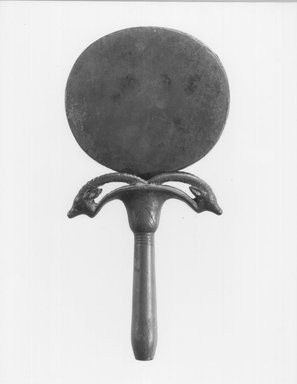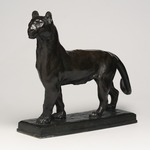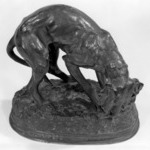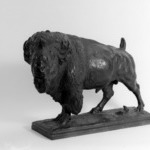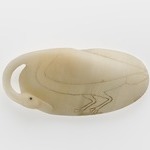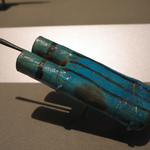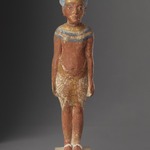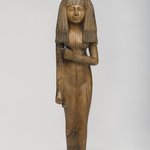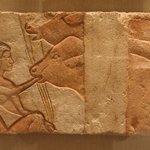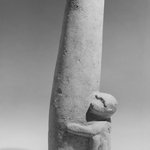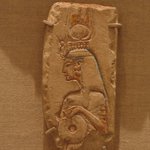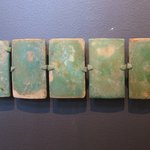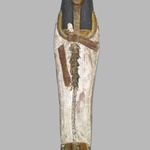

Mirror with Papyrus Handle Featuring Two Ibex Heads, ca. 1539–1292 B.C.E. Bronze, Other (handle): 4 3/16 x 3 9/16 x 13/16 in. (10.7 x 9 x 2 cm). Brooklyn Museum, Charles Edwin Wilbour Fund, 75.168a-b. Creative Commons-BY (Photo: Brooklyn Museum, 75.168a-b_front_PS4.jpg)

Mirror with Papyrus Handle Featuring Two Ibex Heads, ca. 1539–1292 B.C.E. Bronze, Other (handle): 4 3/16 x 3 9/16 x 13/16 in. (10.7 x 9 x 2 cm). Brooklyn Museum, Charles Edwin Wilbour Fund, 75.168a-b. Creative Commons-BY (Photo: Brooklyn Museum, CUR.75.168a-b_erg456.jpg)

Mirror with Papyrus Handle Featuring Two Ibex Heads, ca. 1539–1292 B.C.E. Bronze, Other (handle): 4 3/16 x 3 9/16 x 13/16 in. (10.7 x 9 x 2 cm). Brooklyn Museum, Charles Edwin Wilbour Fund, 75.168a-b. Creative Commons-BY (Photo: Brooklyn Museum, CUR.75.168a-b_print_negL_708_20A_bw.jpg)

Mirror with Papyrus Handle Featuring Two Ibex Heads, ca. 1539–1292 B.C.E. Bronze, Other (handle): 4 3/16 x 3 9/16 x 13/16 in. (10.7 x 9 x 2 cm). Brooklyn Museum, Charles Edwin Wilbour Fund, 75.168a-b. Creative Commons-BY (Photo: Brooklyn Museum, CUR.75.168a-b_print_negL_708_21A_bw.jpg)

Mirror with Papyrus Handle Featuring Two Ibex Heads, ca. 1539–1292 B.C.E. Bronze, Other (handle): 4 3/16 x 3 9/16 x 13/16 in. (10.7 x 9 x 2 cm). Brooklyn Museum, Charles Edwin Wilbour Fund, 75.168a-b. Creative Commons-BY (Photo: Brooklyn Museum, CUR.75.168a-b_print_negL_708_18A_bw.jpg)
Mirror with Papyrus Handle Featuring Two Ibex Heads
Egyptian, Classical, Ancient Near Eastern Art
Mirrors were also a symbol of cosmic creation. The disc of the mirror on a papyrus-plant handle symbolized the moment when the creator-god emerged from the primordial swamp in the form of the sun. Creation then subdued the chaos of the deserts, here represented by the two ibex heads. This symbolic depiction of the original creation served as an aid to the self’s re-creation in the tomb.

